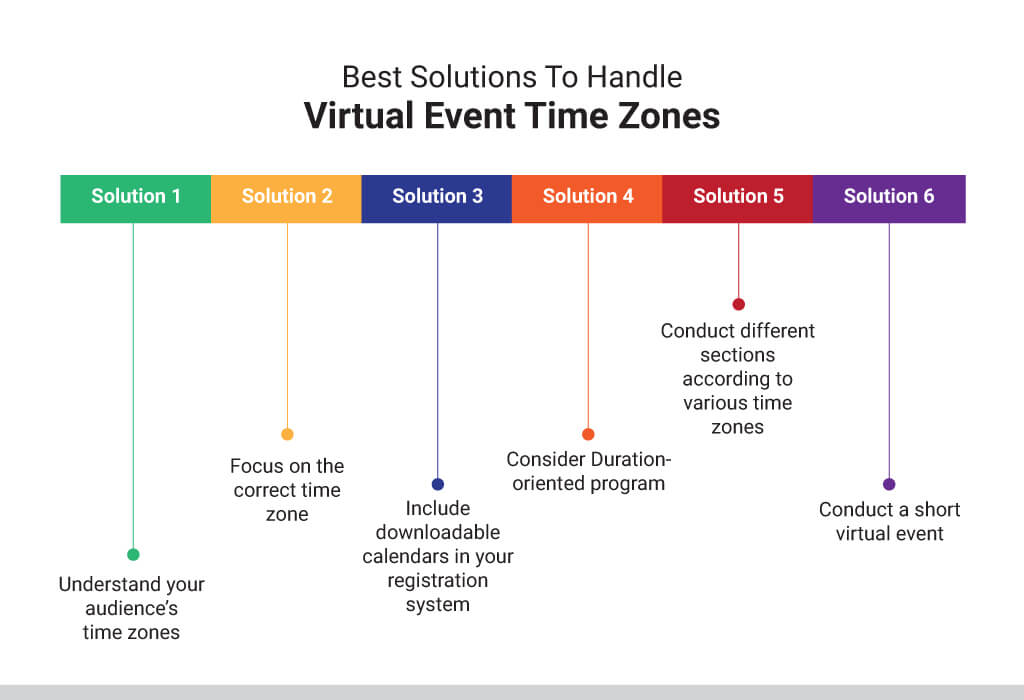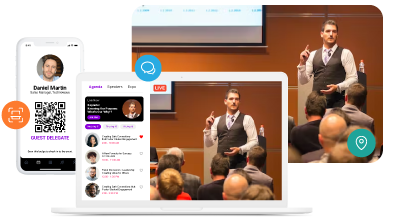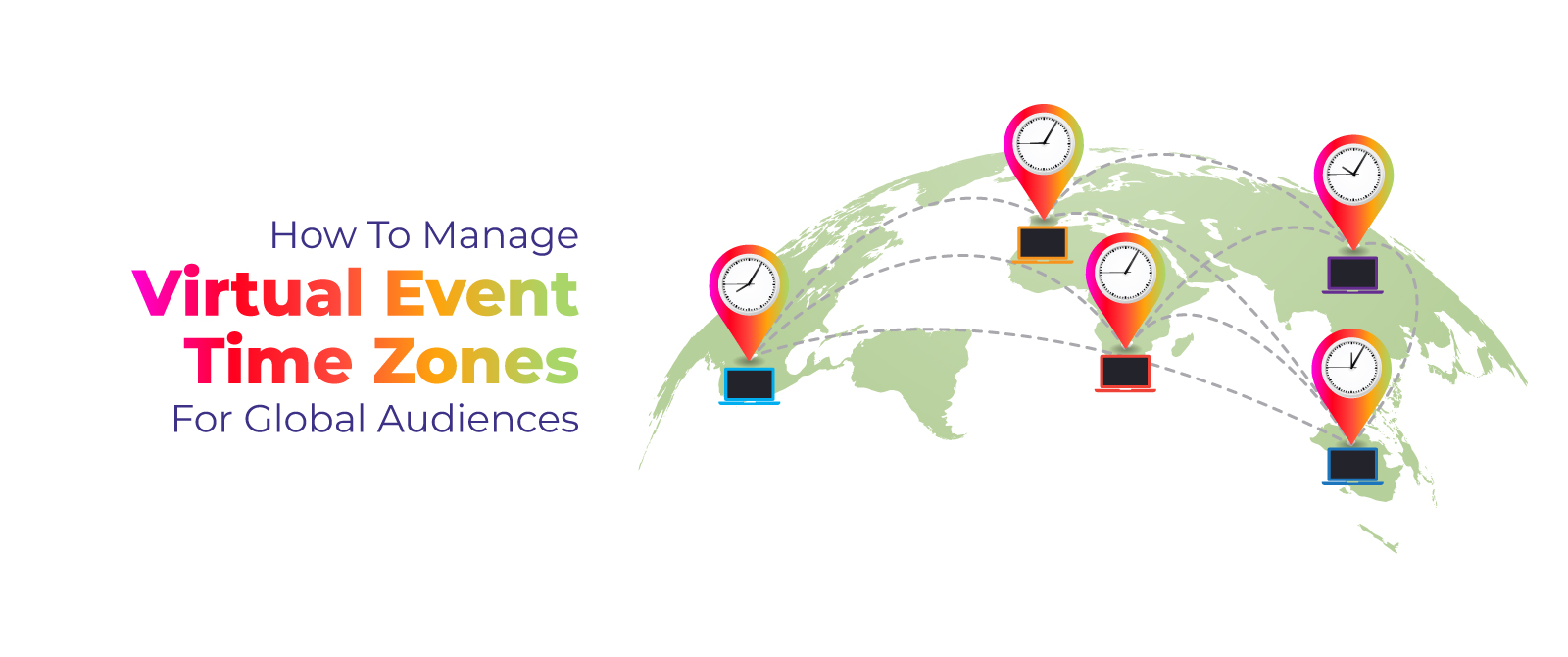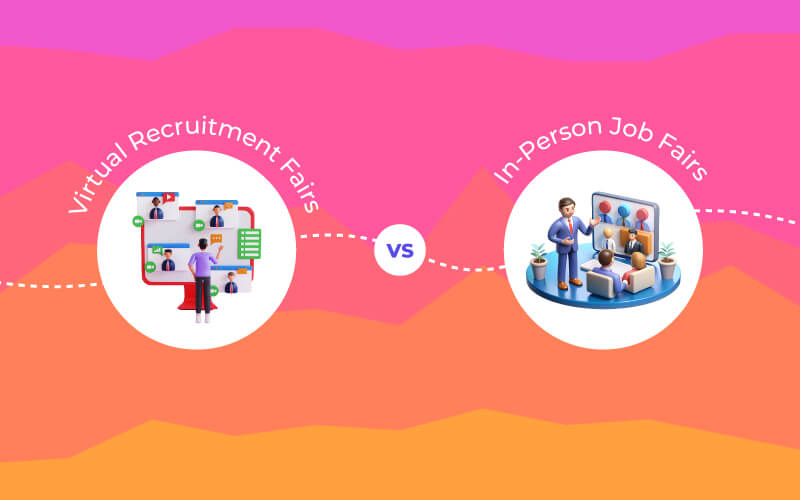The capacity of virtual events to reach audiences worldwide without any geographical limitations is one of its main advantages. Making sure your foreign attendees have the best experience at your event, however, is the problem. One frequent problem that may be solved is language difficulties by providing live interpretation or subtitles.
However, even if everyone in your audience is bilingual, they might not all be in the same time zone. The virtual events include time management-related issues. Make sure folks are available before inviting them to participate in virtual team meetings.
Best Solutions to Handle Virtual Event Time Zones
This session will demonstrate a few virtual event options that deal with time zone issues and expand the reach of your live session for participants in various locations. With these tips, scheduling virtual events for different time zones will be easy. Consider the following tips in order to manage the virtual event time zone.

Solution #1: Understand Your Audience’s Time Zones
Before deciding on the exact date and time for your virtual event, it is important to research your target audience and comprehend when they are available. It is recommended to understand the time zone of your audience before you open the event registration. You can access the registration details in order to understand the time zone of your attendees in advance.
Note:- Don’t mention the exact time in the event’s promotional posts or messages. However, you can add a series of dates. By doing this, you can avoid locking out potential viewers.
Solution #2 Focus on the Correct Time Zone
Even though the virtual environment is not separated into time zones, you will still need to choose one when creating your schedule. The logical course of action would be to select the time zone in which the actual incident would have occurred, or alternatively, pick one of those widely regarded as major markets, such as the US Pacific. But while performing any of these would likely result in a large number of registrations and attendees, it’s possible that the purpose would be missed.
You should think about the most lucrative and pertinent market in your particular industry. Even if they come from relatively smaller areas, individuals will flock to your event if the company partners and customers they’re chasing are likely to be present. To determine whether your presumptions were accurate, examine the attendee and participation rates by area after the event. Then, apply what you learned to improve your subsequent virtual conferences.
Solution #3: Include Downloadable Calendars in Your Registration System
If you are going to host an international virtual event such as a conference or meeting, you need to include different calendars for every time zone. Considering this strategy can prevent confusion. Creating different calendars (time-based) for the audience and manually sending them to every individual is not a good option. It is a time-consuming and costly process. To solve this issue, you can utilize downloadable calendar invite links. It automatically updates the time according to individuals’ time zone. Most virtual event platforms use the following scheduling software in order to support different time zones:
- Sched
- Meeting Planner
- Google Calendar

Solution #4: Consider Duration- Oriented Program
Do not utilize exact timeframes for scheduling breaks, major performances, or any other part of the program. For example, a session at 5 p.m. IST would only be available to those in that time zone, shutting out the rest of the attendance. Instead, divide your show into time segments. For instance, a particular performer will perform after a particular session. All guests will experience it the same way. Your audience can avoid time zone uncertainty by using this virtual event solution. Naturally, if you allocate different days to various time zones, this doesn’t apply.
Solution #5 Conduct Different Sections According to Various Time Zones
Sometimes, the event can only be held on a single day. The possibility of allocating distinct days to various time zones is thus eliminated. The best course of action in this situation is to divide your event into many sessions that cater to different audiences. Even region-based highlights are an option for each of these parts. For instance, if it’s a music event, you may invite musicians from various areas to play for the local crowds. In this manner, the audiences will experience inclusion as well as get to see their preferred acts. To perform various interactive and interesting activities at your virtual event, you can utilize virtual event software.
Use a reliable content management system for the job, divide your material so that keynote speakers appear at various times, and limit access to some sessions to make them more intriguing. You may incorporate both human and automatic on-demand captioning and translation capabilities with virtual event services. Compared to actual events, yours will be easier to access and let guests from other nations take in the information in their own language.
Create an Extraordinary Event Experience
Across All Event Formats

Solution #6 Conduct a Short Virtual Event
Humans have a limited attention span. Even if you paid the guests for it, you couldn’t expect them to remain attentive while using computers for 7-8 hours straight. Because of this, experts advise that virtual events be shorter than actual events. Additionally, stay away from pointless activities like keynote speeches that might cause you to lose the audience’s focus.
The virtual event platform can help you create a more engaging virtual event. Many interactive features, like live conversations, surveys, Q&As, and more, are available on virtual event platforms. With the aid of these technologies, you can keep your online audience engaged. Additionally, shorter programs make it simpler to negotiate time zones; 3-hour programs are more practical than 7-8 hours of programming for each time zone.
Manage Your Virtual Event Time Zones with Dreamcast

Selecting a virtual event service provider that makes it simple for attendees to remain on top of their schedule is crucial if you anticipate participants joining your event from multiple time zones. Attendees can easily access event and session hours in their time zone with Dreamcast, and planners don’t need to do any more effort. Without having to make any adjustments or let your participants know when sessions will begin in their local time zones, Dreamcast can help you plan your whole event. Contact us today for more information and details.
Create an Extraordinary Event Experience
Across All Event Formats








